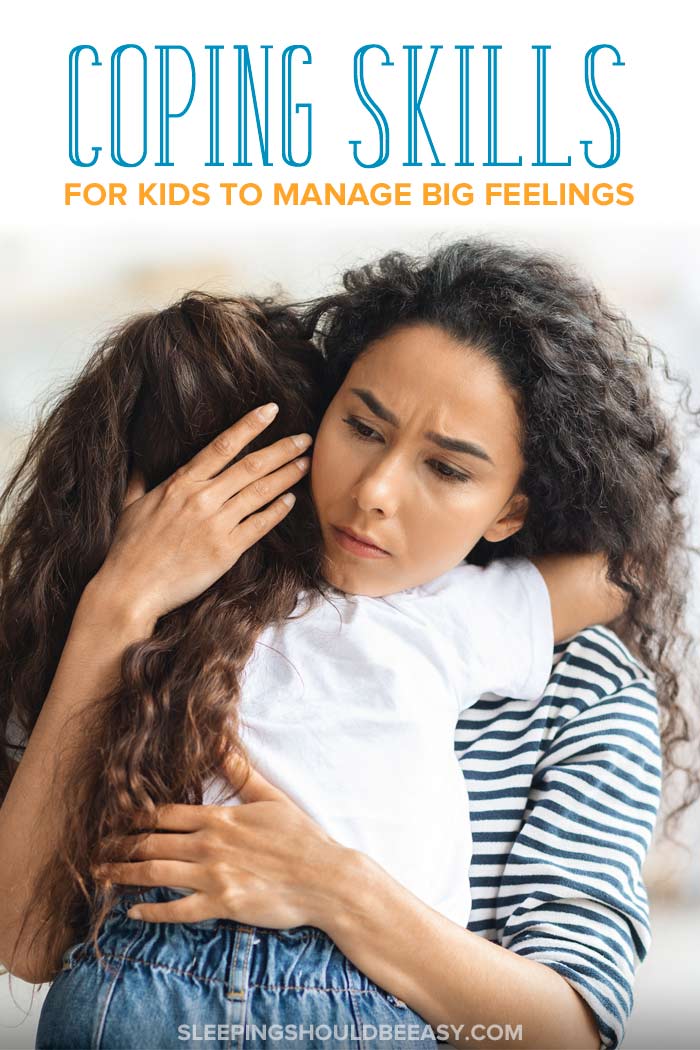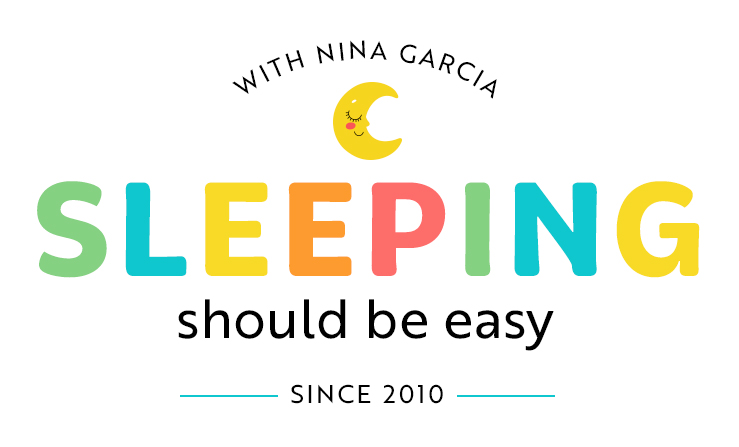Coping Skills for Kids to Help Manage Big Feelings
Does your child struggle with handling difficult emotions? Learn how to teach coping skills for kids to help them manage these big feelings.
 My son came home from summer camp in a horrible mood.
My son came home from summer camp in a horrible mood.
He called me names, got upset at his little brother for no reason, and stomped around yelling for a solid 20 minutes. Since he doesn’t normally act this way, I figured something must have happened to cause this behavior, but it took a while to unravel the details.
It turned out he’d taken a scary tumble, gotten hurt, and felt embarrassed. The physical plus emotional pain was enough to shake him up for a while.
One of the most important jobs as a parent is to teach kids to cope with their big feelings. Many times throughout the day, they have to deal with disappointment, worry, anxiety, fear, sadness, or anger.
They might face an unfamiliar experience like a new babysitter or school. They’re constantly told “no” when they want something, or have to leave the park when they’d rather stay. Perhaps they had a fight with a friend or didn’t get a turn at a game. Even a change of plans can cause big emotions.
Since they’re not born with the skills to process these situations, we need to help them find constructive ways to cope. Here are several strategies I’ve been working on with my kids that I’ve found helpful, and I hope you do too:
Table of Contents
1. Make a list
We’re always telling our kids what they can’t do, like being rough with the dog or throwing their trucks. But what can they do when they’re so furious they have to let off some steam?
Maybe that’s going to their room to calm down or reaching for a favorite stuffed animal to hug. They could write in a journal, run around outside, or bounce a ball. Perhaps it’s as simple as walking away to a different room, reading a book, or working on puzzles.
Make the list together and review it during calmer times so they remember what to do when they need it. That way, when they feel intense emotions, you can remind them of their options.
Free resources: Looking for actionable steps and quick wins in parenting? The Better Parenting 5-Day Challenge is for parents who know they want to improve but need that little nudge and supportive guidance to do so.
When you join the challenge, you’ll get one actionable tip per day that you can do to transform the way you raise your child. This is your chance to challenge yourself and make the changes you’ve been meaning to make. Join my newsletter and sign up today—at no cost to you:
2. Bridge the mind-body connection
Disclosure: This article contains affiliate links. As an Amazon Associate, I earn from qualifying purchases.
Teach your child that worries can sometimes make our bodies ache, from making our muscles tight to causing flutters in our stomachs. Let’s not forget that the discomfort in our bodies (think hunger, exhaustion, a cold) can also put us in a really bad mood.
When she learns to connect what’s happening in her body with her heart and mind, she can better understand her emotions. She can even help herself feel better by getting a snack or taking a quiet moment to herself.
Teach her a few techniques to calm both her mind and body. She can:
- Take deep breaths. Something that many adults do to control stress that does not come easily to kids is taking deep breaths. Katie Hurley, author of The Happy Kid Handbook, suggests deep breathing exercises and visualizations. Have your child imagine using her breath to inflate a balloon, then letting that balloon float away into the clouds. Breathing techniques like these can help her focus on her breath and calm down.
- Practice yoga poses. Practice a few yoga poses to help her wind down. Yoga is great for calming bodies and minds during stressful times. Tree pose, cobra, and downward dog are some favorites.
- Mediate. No one expects a 3 year old to sit still in silent meditation for an hour. Instead, point her to an activity she can focus on. Maybe she can watch the rain drip from the roof outside, count how many times she bounces a tennis ball, or blow bubbles. Focusing in this way can clear and relax her mind.
3. Draw a picture
Whenever my kids have a bad dream or are trying to process something scary, I always suggest they draw a picture.
Not only is making art a soothing activity, but translating frightening ideas to paper takes a lot of the sting out of them. A man-eating snake from a nightmare can look cuter on paper. My son admitted that he takes big changes in his life and draws funny comics about them.
The act of drawing also allows them to process the thoughts going through their minds. No longer are they a jumbled mess that makes no sense, but an art piece that they can describe.
4. Read books about feelings
Many of us save reading for the bedtime routine, but it’s also an amazing tool for calming and reconnecting with our kids any time of the day.
Reading children’s books specifically about feelings helps them feel less alone. They learn coping strategies that they may not have known and realize that everyone goes through challenging situations. Some books talk about how to calm down, while others describe angry feelings many of us experience.
Even babies can learn about feelings through books, from simple words like “happy” and “sad.” Toddlers can increase their vocabulary to include feelings like “frustrated” and “proud.” And bigger kids benefit from reading books that connect feelings and situations.
Get a list of children’s books about feelings.

5. Find your child’s bliss
What helps your child release the tension she feels? Each child has her own unique ways to snap her out of her funk or change the mood when she’s wound too tight.
Maybe it’s knock-knock jokes, blowing bubbles, or physical activities like walking outside or using a jump rope. She might prefer singing silly songs or turning to a coloring book and crayons. This is her way of calming herself down or remembering to pull away from the heightened emotions in a healthy way.
6. Model the behavior
Our kids are always watching us, so one of the best ways to teach is by showing, especially during a stressful situation.
Instead of giving into road rage while driving in traffic, you can narrate your feelings. “Wow, there’s a lot of traffic—we might be late. That’s frustrating and I’m starting to feel tense, so I’m going to play some music because that always makes me feel better.”
You can also focus on gratitude and share what you could be grateful for. “Thankfully, we left early so we have plenty of time to get there.”
Be aware of situations that can trigger you to feel upset, and use those as a way to show your child how to cope with difficult feelings and build resilience.
Conclusion
Kids may not be born knowing how to cope with big feelings, but you can give your child the tools to learn how.
Brainstorm things she can do when challenging emotions arise, and teach her ways to calm her body down. Encourage her to draw a picture when she’s upset, and read books about feelings to normalize what she’s going through.
Learn what she likes to do to help her stay calm, and lastly, model the behavior you want to see. Whether a traffic jam or a hard day at summer camp, we can all learn—and show—a few coping techniques now and then.
Get more tips:
- 8 Keys to Explaining Emotions to Your Child
- Teaching Kids to Lose Gracefully
- How to Teach Kids to Embrace Mistakes
Don’t forget: Join my newsletter and sign up for the Better Parenting 5-Day Challenge today—at no cost to you:

